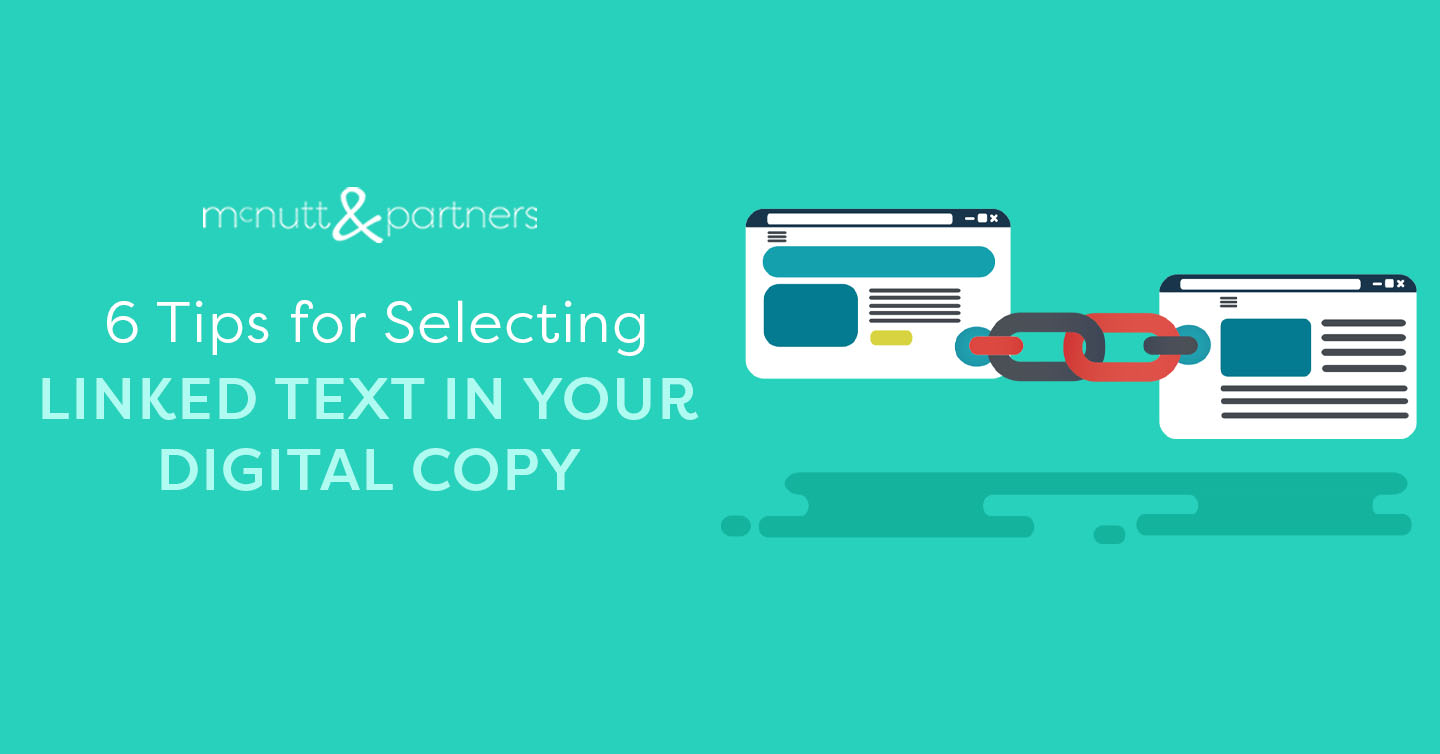Creating links within your digital copy is beneficial for a number of reasons. For one, it’s another drop in the bucket for SEO. Two, it enhances the user experience—conveniently linking website visitors to information relevant to what they are reading about. Did you know though that the particular text you select to represent your link makes a difference? Here we’ll go over some tips for selecting linked text in your digital copy.
What do you mean by linked text?
This is linked text. Linked text is clickable text that takes you to a web link when you click it. In the case of that example, clicking the text takes you to our main McNutt & Partners website.
So, when we talk about selecting linked text, we mean the words you choose to turn into a link. For example, “Check out our blog” is one set of words you could choose to link to your blog. “Click here for our blog” is another example linking to the same destination.
In our tips for selecting linked text in your digital copy, we’ll tell you why the second option is generally a no-no.
Tips for selecting linked text in your digital copy
Choose text that is relevant to where you are linking.
Make sure the text you select accurately describes what you are linking to. For example, “Visit the McNutt & Partners blog!” with a link to our blog makes sense. “Check out our Facebook page!” with a link to the McNutt & Partners blog does not.
Select text that is clear and simple.
Simplicity is key when it comes to choosing your linked text. This will benefit search engines, persons with disabilities using screen readers, and even just the average website visitor. Link only as much text as you need to describe what you’re linking to and leave off the excess.
Avoid linking “Click here.”
You might be inclined to use “Click here!” as your linked text for everything. However, we recommend avoiding this practice for several reasons:
- Visitors want to know where a link is taking them, and “Click here” is vague.
- It adds an extra step to an action. “Click here to read our blog” is more verbose when one could simply say “Read our blog.”
- Search engines don’t like it. They want to see links that are relevant to your content, and “Click here” gives no indication as to what the content is.
- It’s an issue for people using screen readers. The screen reader would read out “Click here,” and a person with disabilities may not know where it is telling them to click, or again what content they are clicking to.
Think about both inbound and outbound links.
Inbound links are those links that go to other pages on your website. Outbound links go to pages on other websites. Search engines like a mix of both in your digital content, so long as the content is relevant.
Don’t stuff your copy with too many links.
Link stuffing is an offense that can knock your SEO points down a few notches. Find a good balance of linked text vs. not, and certainly don’t overdo it on the links in your digital copy.
Double-check your link destinations.
Creating linked text isn’t hard, but we all make mistakes (i.e. typos, broken links, etc.). It’s good practice to double-check to make sure your link destinations are accurate before publishing your content.
Summary
Taking advantage of these tips for selecting linked text in your digital copy will benefit your website visitors as well as put you in a better position in terms of SEO.
McNutt & Partners is a full-service advertising and digital marketing agency. Contact us today for your marketing needs! Call 334-521-1010, or visit our contact page.

